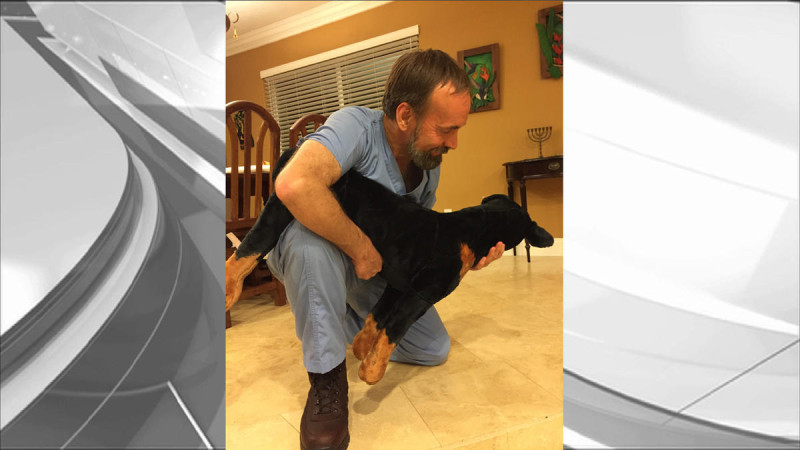Last month’s segment on CPR for pets generated a truly mind-boggling number of responses and requests. By far the most popular request was a demonstration of how to save a dog or cat who is choking. Some readers even shared heartbreaking stories of losing their beloved pets to choking accidents. Every one of these grieving pet parents professed feelings of helplessness and remorse for not knowing what to do to help their fur-baby. It took a lot of courage to share those stories, and while it may be too little too late for those particular pets, perhaps this information might prevent a similar tragedy.Our pets gather information about their surroundings just like babies and toddlers – by putting anything and everything in their mouths. Factor in prey drive, food drive, boredom, and a love for chewing, and it’s not surprising that so many pets suffer from choking related mishaps. If you think your pet is in trouble, ascertain whether or not he is truly choking. He may be simply making that delightful hacking sound he makes when trying to get rid of a hairball, or a piece of grass that’s tickling his throat. Pets who are choking may exhibit some or all of the following signs:How To Administer CPR To Your Pet Acting anxious or frantic Not breathing Gums turning blue or white Making loud, rasping sounds Pawing at his face Gasping for breathIf you see any of these signs, it’s time to take action. And your first action should be to call for help.Pets and Toxins on the TableBear in mind that a pet who cannot breathe will be very frightened, and therefore likely to bite. Stay calm. A panicked cat may do better wrapped in a towel or a blanket, but don’t waste time looking for one. If you can’t grab it easily, don’t bother.Open your pet’s mouth and look inside. If you can see what he’s choking on, reach in and grab it, or have your helper do it. Get your hand out of the mouth quickly!! I cannot stress this strongly enough – there is a very good chance you will be bitten. Do this at your own risk and for goodness sake be careful. When our younger dachshund was choking on a tiny mango seed, my wife pushed me out of the way and pulled out the seed herself. When I took her task about it later, she stated rather bluntly, “You’re a surgeon. I’m not. You can’t afford to get bitten. I can.” Do this at your own risk, and seek medical attention for any bites. Cat bites in particular are a source of dangerous infections. Remember, this is frightening for your pet. If they struggle and howl, don’t be surprised, but don’t give up. Use tough love. They will forgive you. If you can see the object, but cannot reach it, stop. Don’t risk pushing it further down into the trachea. If you see a sharp object embedded in the roof of the mouth, stop. While your pet is distressed, he can breathe. Go straight to the vet where it will be removed under sedation. This is a common emergency with cats, as they absolutely love sewing needles!Preventing Pet PoisoningsIf you can’t remove the foreign body within 20 seconds, you’ll need to progress to the pet version of the Heimlich maneuver. There are varying opinions on how to do this. The one that I feel has the best chance of success has been endorsed by the American Red Cross and the American Veterinary Medical Foundation. It also makes gravity work in your favor! For a large breed dog, pick up just the back end like a wheelbarrow, so the dog’s head tilts downward. You can place your knee underneath his hips to give yourself some leverage, and limit his mobility. Make a fist and place it in the soft spot right under the ribs, just as you might do for a human. Press the fist into the body, and up toward the dog’s head. Do four to five quick repetitions, and do it like you mean it. Use some pressure. Obviously, you don’t want to break a rib, but broken ribs can be fixed. Choking is life or death.For cats and small dogs, pick the pet up by the hips or thighs so that he’s actually hanging upside down. A few shakes, combined with gravity, may be just enough to dislodge the foreign body. If you have a friend with you, have them look in the mouth while the pet is upside down. Again, when combined with gravity, it may be possible to remove the object. And again, do this very, very carefully!Pets and Toxins in the YardFor a cat or small dog Heimlich, pick up the pet, and hold his back against your stomach. Bend forward at the waist (remember, gravity!) so his head is pointing down toward the floor. Just like for a person or large dog, place your fist in that same spot under the rib cage, and apply quick pressure up and forward, about four to five times.If your pet has collapsed and you cannot pick him up, you can use this move for a pet that is lying on his side. If you are physically unable to pick up or tilt your pet, don’t despair. Use this position instead. Lie your pet on his side, preferably the right side, place your fist in the same place, and press into the body, and up toward the pet’s head.Some c
Source: Help! My Pet is Choking! | NBC 6 South Florida


